Opinion & Analysis
A lob wedge is the most dangerous club in your bag—and not in a good way
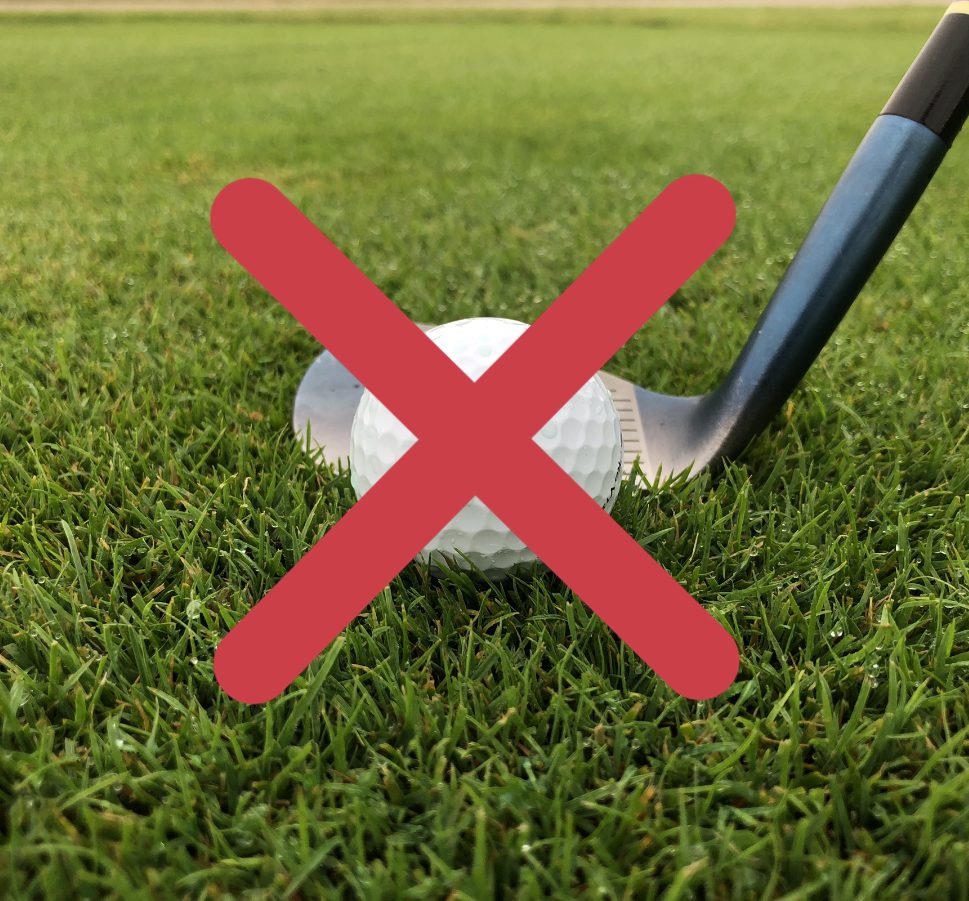
For professional golfers, a 60-degree lob wedge around the green could be classified as a surgical scalpel. Many pros—most notably Phil Mickelson—have built their reputations on the ability to hit miraculous recovery shots with these higher-lofted clubs. Phil has even gone as far as carrying a 64-degree wedge for extreme situations where it might come in handy.
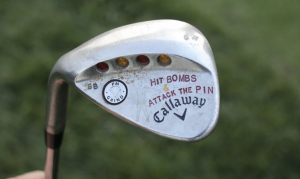
For regular golfers though, higher-lofted wedges can end up being anything but scalpel-like, unless you plan on using one to shred your scorecard after the round. Higher lofted wedges can become a massive liability because of their limited margin for error and the speed at which they are swung. This is also why we see so many people trying to innovate in the wedge market—small changes for regular golfers can make a noticeable difference.
The benefits and dangers of the lob wedge
Being able to effectively use a lob wedge can save a lot of shots around the green, especially when faced with a short-sided up and down or a difficult buried lie, but the hardest part of an open-faced lob wedge shot is repeatability. It’s why you can feel like a hero on one hole, and a complete failure on the next—because the ball ended up exactly where it started…or it ends up on the other side of the green…
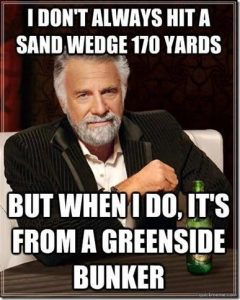
We’ve all done it!
Professionals at the highest level have the benefit of hitting these shots countless times in practice over and over, not just at their home course but week to week in varying conditions on different grass types. Most golfers don’t have this luxury, and without practice or understanding the dynamics of hitting the shot properly, the failure rate goes up quickly. This is why reasonable expectations, good decision making, and simple technique changes can make a big difference.
The WHY?
Wedges with 60 degrees of loft (and even 56 in some cases) look easy to hit since they have large faces which in turn equals greater surface area to make contact but face area versus effective face area to make contact are two completely different things.
- 60° Lob wedge from address, in open playing position
- 60° Lob wedge from ground view, in open playing position
Compared to a club with less loft, the most extreme being a driver, there is a smaller effective area to make contact and transfer energy to the ball, and beyond the transfer of energy, any club that has an effective loft of more than 50 degrees at impact will be more difficult to control in less than perfect conditions since the coefficient of friction decreases. That means you have less control over launch parameters including spin, which on short shots is one of the biggest components to stop the ball close to the intended target.
Solutions to your wedge problem
This one is the most obvious, but it’s also the least exciting: practice. By dedicating valuable practice time to the short game, you can quickly see improvements. Practice helps ingrain “feels” in your technique and also helps build up the knowledge to analyze ground conditions and lies to know which club to hit and how to play the shot.

The second option is a new wedge—come on, who doesn’t want a new wedge? Whether it be based on loft, bounce, or sole configuration, getting set up with the right tools can make a world of difference, especially if what you are using now is ill-fit to your game. If you really struggle with the short shots around the green and are willing to admit that practice isn’t an option, I highly recommend trying a specialty club designed to make the game easier. I know it’s not the “sexy” option but something like the Cutter CTR1 wedge: Cutter wedge -here to help, or a Square Strike wedge for chipping can make golf fun and easier.
Learning to hit different shots, and making simple changes to how you approach the hole can make a huge difference very quickly to your game. This can involve choosing to hit more low running square faced shots with lower lofted-clubs like a 9 or 8-iron, or if you are still trying to be as aggressive as possible, learning to hit delofted shots with your higher lofted wedges which can also help create more spin. If possible, taking a short game lesson with a teacher can be truly game-changing with a few simple technique adjustments.
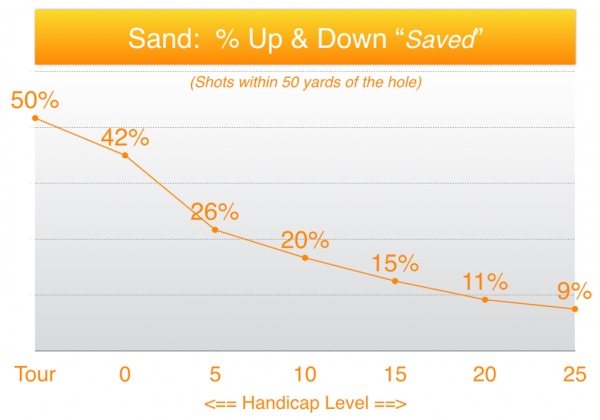
Understanding where you loose shots can help you save them
Last but not least, managing expectations can help take the pressure off when hitting shots around the green and help you make better decisions, leading to lower scores. Instead of trying to hit a “hero” flop shot over a bunker from a bad lie, aim for a larger part of the green and give yourself a better opportunity make your next shot—again not a magic cure, but if you do this a few more times in a round of golf, you can turn those wedges into weapons—and not weapons of self-destruction.
- LIKE655
- LEGIT143
- WOW31
- LOL44
- IDHT20
- FLOP49
- OB27
- SHANK333
19th Hole
Vincenzi’s 2024 Zurich Classic of New Orleans betting preview

The PGA TOUR heads to New Orleans to play the 2023 Zurich Classic of New Orleans. In a welcome change from the usual stroke play, the Zurich Classic is a team event. On Thursday and Saturday, the teams play best ball, and on Friday and Sunday the teams play alternate shot.
TPC Louisiana is a par 72 that measures 7,425 yards. The course features some short par 4s and plenty of water and bunkers, which makes for a lot of exciting risk/reward scenarios for competitors. Pete Dye designed the course in 2004 specifically for the Zurich Classic, although the event didn’t make its debut until 2007 because of Hurricane Katrina.
Coming off of the Masters and a signature event in consecutive weeks, the field this week is a step down, and understandably so. Many of the world’s top players will be using this time to rest after a busy stretch.
However, there are some interesting teams this season with some stars making surprise appearances in the team event. Some notable teams include Patrick Cantlay and Xander Schauffele, Rory McIlroy and Shane Lowry, Collin Morikawa and Kurt Kitayama, Will Zalatoris and Sahith Theegala as well as a few Canadian teams, Nick Taylor and Adam Hadwin and Taylor Pendrith and Corey Conners.
Past Winners at TPC Louisiana
- 2023: Riley/Hardy (-30)
- 2022: Cantlay/Schauffele (-29)
- 2021: Leishman/Smith (-20)
- 2019: Palmer/Rahm (-26)
- 2018: Horschel/Piercy (-22)
- 2017: Blixt/Smith (-27)
2024 Zurich Classic of New Orleans Picks
Tom Hoge/Maverick McNealy +2500 (DraftKings)
Tom Hoge is coming off of a solid T18 finish at the RBC Heritage and finished T13 at last year’s Zurich Classic alongside Harris English.
This season, Hoge is having one of his best years on Tour in terms of Strokes Gained: Approach. In his last 24 rounds, the only player to top him on the category is Scottie Scheffler. Hoge has been solid on Pete Dye designs, ranking 28th in the field over his past 36 rounds.
McNealy is also having a solid season. He’s finished T6 at the Waste Management Phoenix Open and T9 at the PLAYERS Championship. He recently started working with world renowned swing coach, Butch Harmon, and its seemingly paid dividends in 2024.
Keith Mitchell/Joel Dahmen +4000 (DraftKings)
Keith Mitchell is having a fantastic season, finishing in the top-20 of five of his past seven starts on Tour. Most recently, Mitchell finished T14 at the Valero Texas Open and gained a whopping 6.0 strokes off the tee. He finished 6th at last year’s Zurich Classic.
Joel Dahmen is having a resurgent year and has been dialed in with his irons. He also has a T11 finish at the PLAYERS Championship at TPC Sawgrass which is another Pete Dye track. With Mitchell’s length and Dahmen’s ability to put it close with his short irons, the Mitchell/Dahmen combination will be dangerous this week.
Taylor Moore/Matt NeSmith +6500 (DraftKings)
Taylor Moore has quickly developed into one of the more consistent players on Tour. He’s finished in the top-20 in three of his past four starts, including a very impressive showing at The Masters, finishing T20. He’s also finished T4 at this event in consecutive seasons alongside Matt NeSmith.
NeSmith isn’t having a great 2024, but has seemed to elevate his game in this format. He finished T26 at Pete Dye’s TPC Sawgrass, which gives the 30-year-old something to build off of. NeSmith is also a great putter on Bermudagrass, which could help elevate Moore’s ball striking prowess.
- LIKE6
- LEGIT1
- WOW1
- LOL0
- IDHT0
- FLOP2
- OB1
- SHANK1
19th Hole
Vincenzi’s 2024 LIV Adelaide betting preview: Cam Smith ready for big week down under

After having four of the top twelve players on the leaderboard at The Masters, LIV Golf is set for their fifth event of the season: LIV Adelaide.
For both LIV fans and golf fans in Australia, LIV Adelaide is one of the most anticipated events of the year. With 35,000 people expected to attend each day of the tournament, the Grange Golf Club will be crawling with fans who are passionate about the sport of golf. The 12th hole, better known as “the watering hole”, is sure to have the rowdiest of the fans cheering after a long day of drinking some Leishman Lager.
The Grange Golf Club is a par-72 that measures 6,946 yards. The course features minimal resistance, as golfers went extremely low last season. In 2023, Talor Gooch shot consecutive rounds of 62 on Thursday and Friday, giving himself a gigantic cushion heading into championship Sunday. Things got tight for a while, but in the end, the Oklahoma State product was able to hold off The Crushers’ Anirban Lahiri for a three-shot victory.
The Four Aces won the team competition with the Range Goats finishing second.
*All Images Courtesy of LIV Golf*
Past Winners at LIV Adelaide
- 2023: Talor Gooch (-19)
Stat Leaders Through LIV Miami
Green in Regulation
- Richard Bland
- Jon Rahm
- Paul Casey
Fairways Hit
- Abraham Ancer
- Graeme McDowell
- Henrik Stenson
Driving Distance
- Bryson DeChambeau
- Joaquin Niemann
- Dean Burmester
Putting
- Cameron Smith
- Louis Oosthuizen
- Matt Jones
2024 LIV Adelaide Picks
Cameron Smith +1400 (DraftKings)
When I pulled up the odds for LIV Adelaide, I was more than a little surprised to see multiple golfers listed ahead of Cameron Smith on the betting board. A few starts ago, Cam finished runner-up at LIV Hong Kong, which is a golf course that absolutely suits his eye. Augusta National in another course that Smith could roll out of bed and finish in the top-ten at, and he did so two weeks ago at The Masters, finishing T6.
At Augusta, he gained strokes on the field on approach, off the tee (slightly), and of course, around the green and putting. Smith able to get in the mix at a major championship despite coming into the week feeling under the weather tells me that his game is once again rounding into form.
The Grange Golf Club is another course that undoubtedly suits the Australian. Smith is obviously incredibly comfortable playing in front of the Aussie faithful and has won three Australian PGA Championship’s. The course is very short and will allow Smith to play conservative off the tee, mitigating his most glaring weakness. With birdies available all over the golf course, there’s a chance the event turns into a putting contest, and there’s no one on the planet I’d rather have in one of those than Cam Smith.

Louis Oosthuizen +2200 (DraftKings)
Louis Oosthuizen has simply been one of the best players on LIV in the 2024 seas0n. The South African has finished in the top-10 on the LIV leaderboard in three of his five starts, with his best coming in Jeddah, where he finished T2. Perhaps more impressively, Oosthuizen finished T7 at LIV Miami, which took place at Doral’s “Blue Monster”, an absolutely massive golf course. Given that Louis is on the shorter side in terms of distance off the tee, his ability to play well in Miami shows how dialed he is with the irons this season.
In addition to the LIV finishes, Oosthuizen won back-to-back starts on the DP World Tour in December at the Alfred Dunhill Championship and the Mauritus Open. He also finished runner-up at the end of February in the International Series Oman. The 41-year-old has been one of the most consistent performers of 2024, regardless of tour.
For the season, Louis ranks 4th on LIV in birdies made, T9 in fairways hit and first in putting. He ranks 32nd in driving distance, but that won’t be an issue at this short course. Last season, he finished T11 at the event, but was in decent position going into the final round but fell back after shooting 70 while the rest of the field went low. This season, Oosthuizen comes into the event in peak form, and the course should be a perfect fit for his smooth swing and hot putter this week.

- LIKE10
- LEGIT2
- WOW0
- LOL1
- IDHT0
- FLOP1
- OB1
- SHANK1
Opinion & Analysis
The Wedge Guy: What really makes a wedge work? Part 1

Of all the clubs in our bags, wedges are almost always the simplest in construction and, therefore, the easiest to analyze what might make one work differently from another if you know what to look for.
Wedges are a lot less mysterious than drivers, of course, as the major brands are working with a lot of “pixie dust” inside these modern marvels. That’s carrying over more to irons now, with so many new models featuring internal multi-material technologies, and almost all of them having a “badge” or insert in the back to allow more complex graphics while hiding the actual distribution of mass.
But when it comes to wedges, most on the market today are still single pieces of molded steel, either cast or forged into that shape. So, if you look closely at where the mass is distributed, it’s pretty clear how that wedge is going to perform.
To start, because of their wider soles, the majority of the mass of almost any wedge is along the bottom third of the clubhead. So, the best wedge shots are always those hit between the 2nd and 5th grooves so that more mass is directly behind that impact. Elite tour professionals practice incessantly to learn to do that consistently, wearing out a spot about the size of a penny right there. If impact moves higher than that, the face is dramatically thinner, so smash factor is compromised significantly, which reduces the overall distance the ball will fly.
Every one of us, tour players included, knows that maddening shot that we feel a bit high on the face and it doesn’t go anywhere, it’s not your fault.
If your wedges show a wear pattern the size of a silver dollar, and centered above the 3rd or 4th groove, you are not getting anywhere near the same performance from shot to shot. Robot testing proves impact even two to three grooves higher in the face can cause distance loss of up to 35 to 55 feet with modern ‘tour design’ wedges.
In addition, as impact moves above the center of mass, the golf club principle of gear effect causes the ball to fly higher with less spin. Think of modern drivers for a minute. The “holy grail” of driving is high launch and low spin, and the driver engineers are pulling out all stops to get the mass as low in the clubhead as possible to optimize this combination.
Where is all the mass in your wedges? Low. So, disregarding the higher lofts, wedges “want” to launch the ball high with low spin – exactly the opposite of what good wedge play requires penetrating ball flight with high spin.
While almost all major brand wedges have begun putting a tiny bit more thickness in the top portion of the clubhead, conventional and modern ‘tour design’ wedges perform pretty much like they always have. Elite players learn to hit those crisp, spinny penetrating wedge shots by spending lots of practice time learning to consistently make contact low in the face.
So, what about grooves and face texture?
Grooves on any club can only do so much, and no one has any material advantage here. The USGA tightly defines what we manufacturers can do with grooves and face texture, and modern manufacturing techniques allow all of us to push those limits ever closer. And we all do. End of story.
Then there’s the topic of bounce and grinds, the most complex and confusing part of the wedge formula. Many top brands offer a complex array of sole configurations, all of them admittedly specialized to a particular kind of lie or turf conditions, and/or a particular divot pattern.
But if you don’t play the same turf all the time, and make the same size divot on every swing, how would you ever figure this out?
The only way is to take any wedge you are considering and play it a few rounds, hitting all the shots you face and observing the results. There’s simply no other way.
So, hopefully this will inspire a lively conversation in our comments section, and I’ll chime in to answer any questions you might have.
And next week, I’ll dive into the rest of the wedge formula. Yes, shafts, grips and specifications are essential, too.
- LIKE31
- LEGIT7
- WOW1
- LOL1
- IDHT2
- FLOP3
- OB1
- SHANK3
-

 19th Hole2 weeks ago
19th Hole2 weeks agoDave Portnoy places monstrous outright bet for the 2024 Masters
-

 19th Hole2 weeks ago
19th Hole2 weeks agoTiger Woods arrives at 2024 Masters equipped with a putter that may surprise you
-

 19th Hole18 hours ago
19th Hole18 hours ago‘Absolutely crazy’ – Major champ lays into Patrick Cantlay over his decision on final hole of RBC Heritage
-

 19th Hole3 weeks ago
19th Hole3 weeks agoReport: Tiger Woods has ‘eliminated sex’ in preparation for the 2024 Masters
-

 19th Hole1 week ago
19th Hole1 week agoTwo star names reportedly blanked Jon Rahm all week at the Masters
-

 19th Hole7 days ago
19th Hole7 days agoReport: LIV Golf identifies latest star name they hope to sign to breakaway tour
-

 19th Hole1 week ago
19th Hole1 week agoNeal Shipley presser ends in awkward fashion after reporter claims Tiger handed him note on 8th fairway
-

 19th Hole6 days ago
19th Hole6 days agoBrandel Chamblee has ‘no doubt’ who started the McIlroy/LIV rumor and why

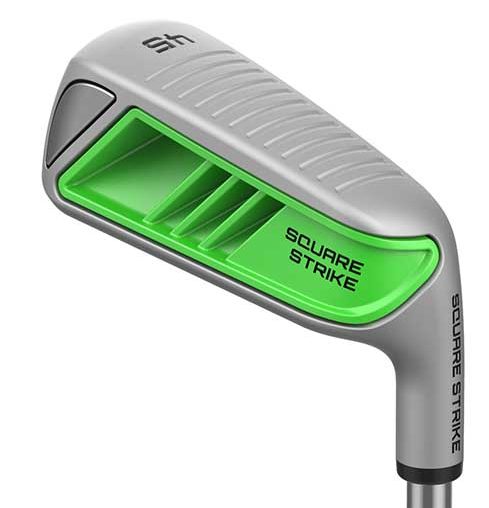
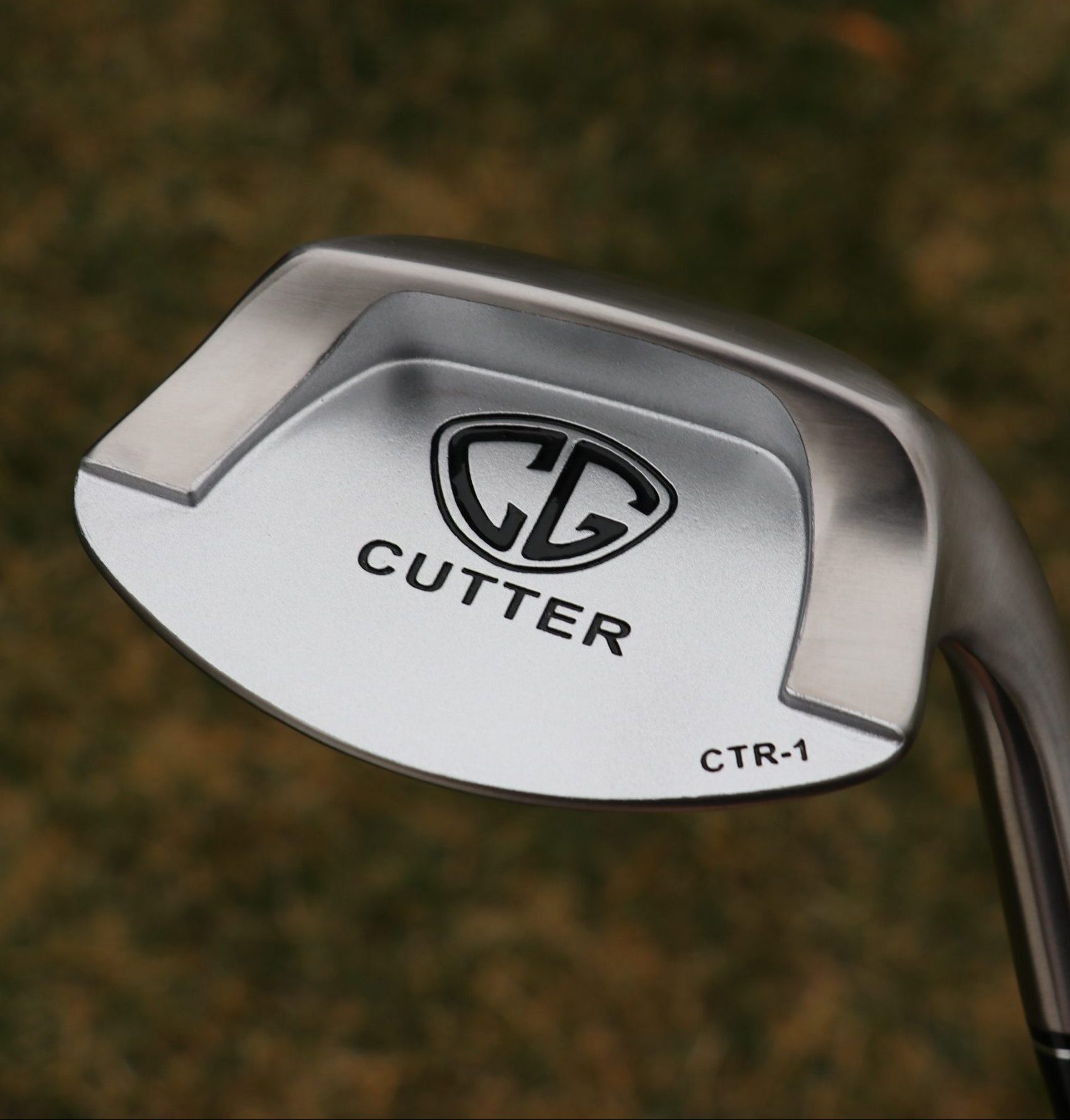
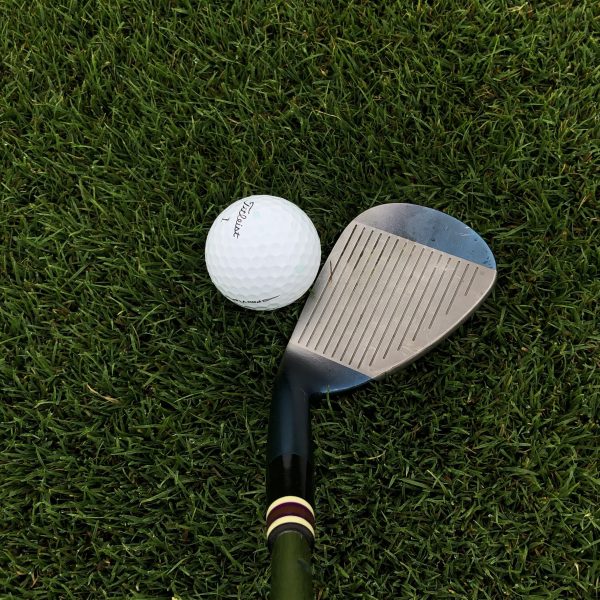
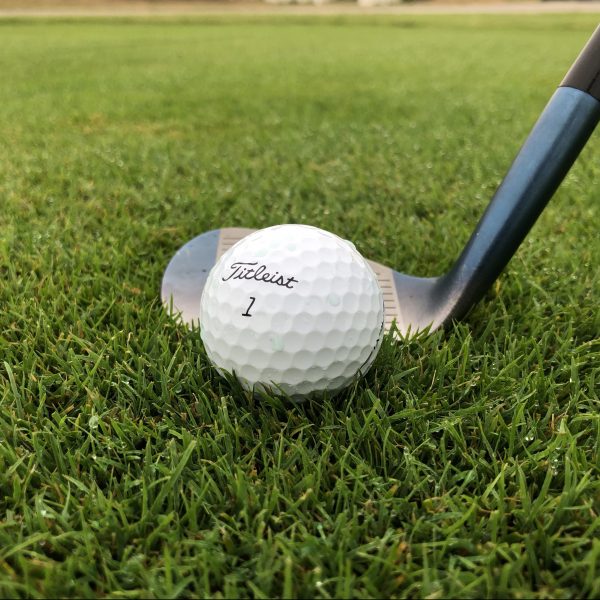






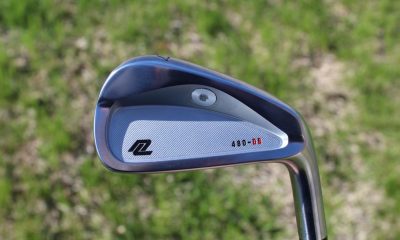













Pingback: The Different Types Of Golf Clubs: The Sand Wedge – The Annika Academy
Pingback: Unveiling the Secrets of Golf Wedges: Understanding the Different Degrees – PrestwickCountryClub.net
Pingback: What Degree Is An Approach Wedge? - Longleaf Golf
Pingback: When To Use Irons And Wedges On The Golf Course – The Annika Academy
Pingback: Purchasing Your First Set Of Golf Irons – FAQs
Pingback: From Sunday bags to club fitting: My favorite pieces of 2020 – GolfWRX
steve jenney
Oct 17, 2020 at 9:54 am
When I teach and I find a lot wedge in a 20 handicappers bag I say “there are only two people I know that can use this club” GOD and Tiger Woods! Michelson is so over rated its disgusting! Put in another hybrid or another wedge. 46, 49 52 and 56 at most.
Samsam
Jul 12, 2021 at 11:30 pm
It is scary you actually teach someone.
Dennis Beach
Aug 8, 2020 at 10:05 am
I usually use my 60* to make full swing shots. Trying to finesse a lob with a half swing is better left to the pros. Greenside bunkers where the green is higher than the sand is my go to 60* shot, especially if the green is eye level when you are in the bunker, as it requires a full swing to get up and on most of the time. My 56* is my all around chip/pitch club within 50 yards of the green. If the ground is level, I will use a pitching(46*)wedge to bump and run. I carry a 52*, but use mostly on full shots inside 100 yards of the green.
christian
Aug 1, 2020 at 1:33 pm
Hitting a lob wedge doesn’t need to be some big mysterious event. It’s the same as the rest of the irons in you bag. Keep your hands ahead of the ball at impact and you can hit a lob wedge just as effectively as a 4 iron. I don’t care if you’re hitting a one hop and stop pitch or a high soft lob, keep your shaft leaning forward and hands ahead of the ball at impact and you’ll hit 90% of them just fine. Everyone gets freaked out about 60 degree wedges for some reason and in the end, it’s just a club that needs a little practice to figure out…but then again, don’t all of your clubs need that.
ChipNRun
Jul 30, 2020 at 7:29 pm
Two things to decide on LWs:
* Can you hit a 60* reliably? If not, go with a 58*.
* Whether it’s a 60* or 58*, you need to pull firmly through the shot with the left side. If not, you’ll come up short a lot on your LW.
Once you resolve these two points, remember: a LW is not an all-occasions club. If you hit a lob into a green with a false front, don’t be surprised if the ball spins back to your feet. In this case, go to a chip and run if you’re going uphill slightly.
I saw this happen several times from the U.S. women in the 2014 Curtis Cup. The U.S. would lob into the false front and die, or spin back, while the British/Irish women would roll a chip-and-run in close for an easy tap-in. (Fortunately, the US women were dropping iron-shot darts into the green from the fairway, and eventually won out.)
Par-Tee-Animal
Jul 29, 2020 at 9:52 pm
Honestly, I think most of Ryan’s work is just product of boredom. This article is so lazily written that the only data he provides is a percentage of “sand saves” with no data on what kind of wedge was used during those attempted “saves”.
Also on a similarly and ironic note, he includes a meme about skulling a sand wedge 170 yards from a bunker. What degree is a sand wedge again? Oh that’s right it’s between 54-57 degrees, so he’s basically invalidated his argument in one meme.
How often are you going to open the face of a 60* lob wedge in a bunker or around the green? Hardly ever, want to know why? Because it has 60* of loft unlike the 56* everyone opens up and sweeps through the bunker with that has the added repercussion of higher bounce which leads to more skulled shots than a 60* with lower bounce.
Now are lob wedges for everyone? Certainly not, there are guys like Lee Trevino who only carried a wedge as high as 54* and had a successful career. But for someone who want a little more confidence to land a nice soft shot onto the green over a bunker or even a water hazard they’re a nice tool to have. Why work on building a whole new swing for one shot when you can buy a club that effectively has the same mechanics?
Ryan, I highly encourage you to rethink your Op-Ed articles as they’re basically non-educated opinions by someone who speed out articles that read like Buzzfeed headlines.
I saw your latest post about club makers and gourmet chefs being similar, maybe it’s time for you to hang up the carry bag and take up cooking. At least that way everything is already measured out for you so you don’t have to try to use any critical thinking which you seem to lack.
PATRICK CARROLL
Jul 29, 2020 at 3:23 pm
When i was a 25 handicap (maybe more that’s just a guess), I used a lob wedge often and ineffectively. Probably rarely at the right time. It probably didn’t help my score like using a 9 iron to bump and run would have. But it was fun.
I’m officially a 12 handicap now. The big difference is I know the shots I CAN hit and know the shots I SHOULD hit. That combination means i spend most of my time using my 54* with great success. But, when I need to play a high, short, soft shot, I can do it with moderate success. Certainly much better than I could with an open faced 54 or lower.
In short. Know the FEW shots and scenarios you NEED a LW and be diligent in using the club ONLY for those shots.
Evan
Jul 27, 2020 at 12:08 pm
Why, when facing a short shot that needs to fly high and land softly, wouldn’t a LW be helpful, regardless of handicap- in fact probably more helpful to a less skilled player?
JackCi
Jul 27, 2020 at 8:15 am
This is a dumb article. I use my 60* a lot and also any other club down to a 7 even around the green. The 60* is nothing short of s godsend around the green and one of the easiest clubs to hit. Whoever wrote this is a hack and should retire.
BWeez
Jul 25, 2020 at 2:34 pm
A 60 degree wedge is useless and isn’t worthy of the slot in the bag, you’d be better off with a driving iron. My 56 degree is the most effective club in my bag and I use it in a million different situations. It is also the club I practice with the most. Anyone who puts anything above a 48 degree in their hand and hasn’t got serious reps with it is hoping to get lucky.
Justin
Jul 21, 2020 at 3:58 pm
I think this article has some credence. I have a 60 degree wedge and used many different kinds of grinds and bounces in the past. It is in the grinds and bounces that I think can benefit each player the most. Once the player understands what is best utilized for them can the wedge be beneficial. I have though found lately I have gravitated to more my 56 and 52 on standard wedge shots and pitches and only using my 60 in specialty situations. It is quite a low bounce so it comes in handy on tight lies and firm bunkers. It has a decent amount of heal and toe relief. I am a low single digit handicap. Not sure if thats any relevance to the situation but I always used to just use a 60* form anywhere. Have found since I expanded the 56 and 52 it has allowed me greater control over being able to keep the flight down and get the ball running on the green faster.
Bas
Jul 20, 2020 at 5:13 am
I’m a 38 handicap and have a 60 degree Cleveland CBX in the bag. It is incredibly easy to hit, more so than my SW and AW (Callaway Rogue). I just put the ball in the middle of my stance, weight 50/50 and swing through the ball nice and easy. Nothing fancy. Love it from the sand as well.
Although at my level I have never even thought about ‘opening up’ a 60 degree wedge. Why on earth would you do that? Isn’t the point of a 60 degree that you don’t have to open up your 54 degree? i would think that 60 would be enough.
nomad golfer
Jul 20, 2020 at 12:01 am
I use a Lovett chipper wedge for getting out of sand traps otherwise it just stays in the bag. My reliable short range club is a sand wedge which I don’t use in sand !.
Yeah it’s a funny game.
Jonas Henderson
Jul 19, 2020 at 9:05 pm
Exactly what audience are you addressing here? A lob wedge is an entirely legitimate tool for many serious golfers. I bet among single digit hcp players, most would say it’s indispensable. Among mid-cappers, I bet a good proportion wield it with decent competence, especially, if they use it for standard chips and pitches, and not hero shots.
I’d wager the 3w has destroyed more rounds than LWs ever have.
gwelfgulfer
Jul 29, 2020 at 11:46 am
I’d easily take that bet. The LW has far more potential use in a round than a 3wd does for the vast majority. More so if they aren’t hitting a good % of GIR’s and blindly grab the 60* for each and every situation.
Simms
Jul 19, 2020 at 10:26 am
If you play public golf I find it a lot easier to find a place to practice 58 degree lob and chip shots then any other shot…almost no one in the public course arena has a 100 yard grass to a real green practice area and for most of us 75% of driving ranges are mats (almost a waste of time for short iron and fairway wood practice). So I keep a 58 in my bag because I have practiced with it till it works.
Tom Duckworth
Jul 19, 2020 at 10:15 am
I think Phil made the idea of a lob wedge popular for many golfers and that has probably hurt their games. In many weekend golfers minds their idea of the short game is to hit a high shot that lands close to the hole and stops, no matter what the shot really calls for. I guess a low running chip isn’t as sexy as a high lob but I’ll take closer to the hole any day.
Matt70
Jul 18, 2020 at 1:35 pm
I only carry 46° and then 54°. Keep it simple. +0.2 hcap
Duane Martin
Jul 18, 2020 at 1:08 pm
I still carry my Ping Eye 2+ SW instead of lob wedge…..57.5 degrees, double bevel sole, 64.5 degrees of lie angle.
Best “SW” ever made imo…. easy to flop, easy to hit 80 yards and easy to hit all green side bunker shots with.
But like everyone else has said….. practice goes a long way towards perfection.
Rascal
Jul 18, 2020 at 12:04 pm
I agree, don’t see the need to take up the bag spot when I can use the 3i instead.
Mac
Jul 18, 2020 at 3:43 am
Technique is king!
gwelfgulfer
Jul 19, 2020 at 2:34 pm
Pretty well this. Golf is hard, even harder to play very well and the vast majority of players in the world have had little to no actual quality instruction, little to no practice (or practice poorly because of lack of knowledge) or actual drive/ability to get better.
Dicklaus
Jul 17, 2020 at 7:06 pm
I’ve been a Cat 1 golfer for the best part of 50 years. The whole basis of the short game is to get the ball on the ground as soon as possible – unless you’re forced otherwise.
I tried a LW once and realised it was an unreliable club – unless I was prepared to put in a lot of practice.
It was also evident that a better strike, and the same result as a LW, was possible by opening up my 54 SI.
In other words, the shot I’d learnt as a kid & used for decades.
Different strokes for different folks!
Dan
Jul 17, 2020 at 6:13 pm
I was a scratch when 95% of players didn’t carry a lob wedge, myself included. You practice enough you can hit anything.
Richard Pym
Jul 17, 2020 at 4:39 pm
For me it’s all about course management a good player knows most of the time what type of shot to hit around the green. I think that the slightly higher handicappers sometimes try to hit the miracle Mickelson esq flops shots they have seen from TV rather than taking the easier shot for say bogey and walking away with 1 or 2 points rather than a blob.
Bob Jones
Jul 17, 2020 at 3:50 pm
My 60-degree wedge is calibrated to certain distances for pitching and for chipping. I have practiced with it around the green and am familiar with what I can do with it and what I can’t. It’s a big stroke-saving club for me.
KP
Jul 17, 2020 at 2:47 pm
I never thought I would see an endorsement for gimmicks like the Square Strike wedge on GolfWrx, a website that is supposedly geared towards serious golfers. I’m stunned.
Acemandrake
Jul 17, 2020 at 1:13 pm
56 is easier to use than 58 or 60. It’s also more versatile.
For me, there’s just less thought involved with the 56.
David
Jul 17, 2020 at 12:46 pm
I could probably hit 75% of my 60 degree shots with my 56, but still would play it more often in a round than I would a 3 wood. For my set I have put a 60 in the bag, lowered the loft on my 5 wood, and dumped the 3 wood to stay at 14 clubs. Newer 60s seem to have better weight distribution and easier to hit than my older versions did but that’s just my opinion. I think it comes down to understanding your capability when picking your target landing area, but its doesn’t seem any harder to hit to me. I understand I’m not Phil.
Sean Foster-Nolan
Jul 17, 2020 at 12:44 pm
I disagree. I have both a 58 and 62 degree. They are real stroke savers for me.
DougE
Jul 17, 2020 at 11:38 am
I too have to disagree, with respect.
I feel this article might be better published on a site where the majority of players are mid to higher handicappers. Not WRX. The article itself is not totally off base in the opinions presented, though it is quite condescending if you are lumping good players into the equation. You don’t get to be a single digit handicap without having good control of your wedges and a somewhat thorough understanding of the design and dynamics of wedges and swings, particularly short game swings.
Personally, I could not play to the level I do without a good quality lob wedge. I use anything from a hybrid to a 58* around the greens, but 90% of the time, it is my 58. It is the most trusted short game club in my bag. Sure, I screw up with it, occasionally, just like everyone else does from time to time, but I’ll take the 90-95%, good to excellent shot, success rate I do have with it any day, over not having a LW in my bag at all. Yes, I admit, I practice and play a lot (virtually everyday), so I am very aware of how to handle it properly. But, I would also guess, that the majority of WRX readership would fall into my same category (4.8), or better. Most here are serious players of the game, not just casual golfers.
A simple qualification in the beginning of the article suggesting that it is aimed more at mid to higher handicap level golfers, and then the article has plenty of merit. JMO.
John B
Jul 17, 2020 at 11:05 am
Am 84 now – 30 years with my Ping 60 degree lob. Swing plane & speed very important. Don’t give up, just practice, practice!
Brandon
Jul 17, 2020 at 10:34 am
I think the negative feedback misses the real point Ryan is trying to make. Perhaps Ryan should change the title to “A lob wedge CAN be the most dangerous club.” It seems like the real point of it is that the club can be dangerous when trying to replicate the shots tour pros make look easy. I like using my lob wedge as much as any of you, but I wouldn’t dream of trying anything more complicated than a simple pitch shot.
Big_Church
Jul 17, 2020 at 10:30 am
I’m a 12 index and use a 60 all the time around the green, gets me out of trouble(which happens a lot) quite often. Disagree here.
Obee
Jul 17, 2020 at 10:19 am
Define your audience first. The overwhelming majority of players below a 10-handicap can wield a LW just fine, and for many players 5 and under, it’s their go-to wedge around the green.
Brian Parsons
Jul 17, 2020 at 9:54 am
I completely disagree with this. I’m a 7 index and I would be lost without my 60. Gets me out of trouble around the greens all the time. I use it almost exclusively on shorter sand shots its my go to club for a full 80-90 yard shot from the fairway. Love my 60.
Brandon
Jul 17, 2020 at 11:40 am
I agree with you completely. Sometimes I’ll chunk or blade my 60, but I do it with my 56 or my 52 as well. Definitely not going to buy an infomercial wedge just because I suck. I’d rather be a 7 with real clubs and be able to look at myself in the mirror than a 5 with clown clubs.
SV677
Jul 17, 2020 at 9:47 am
I agree, lob wedges are a disaster waiting to happen. I pretty much only use one for full shots. Even then I avoid it as much as possible. I also do not open the clubface because the ball goes 45* left (lefty) every time. I think a max of 56* is enough unless one is very skilled. Find the safe spot on the green and hope for a long putt and avoid disaster.
Alexander Thompson
Jul 17, 2020 at 9:39 am
I disagree with this idea. I think more golfers should utilize a lob wedge. It’s not necessarily about technique of hitting the ball. It’s about knowing how to set up to the shot correctly. Feet position, hand position, and ball position are the keys to hitting a lob wedge. These don’t require much practice since they are set up related. Promoting gimmicky clubs to make the game easier is a set up for failure when the solution is rather simple and allows people to have a better understanding of what the club should be doing at impact with the ball.
Skip
Jul 17, 2020 at 9:32 am
Dumb article to assume nobody is good enough to use a lob wedge.
brian
Jul 17, 2020 at 9:27 am
I stopped playing with anything higher lofted than a 56 degree. I can open the face and hit flops every bit as easily with a 56 and it has more utility, for me, than a 60.